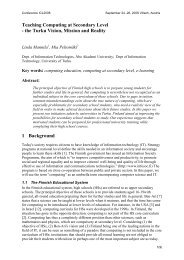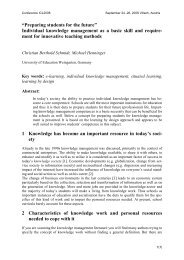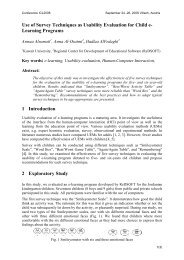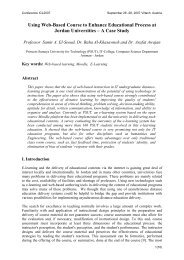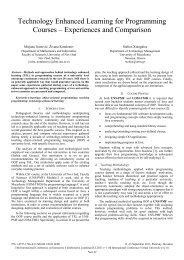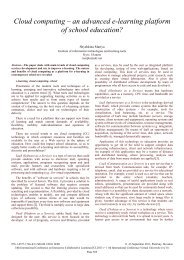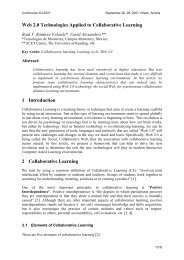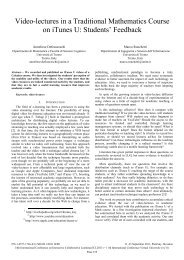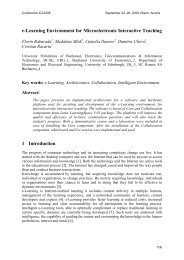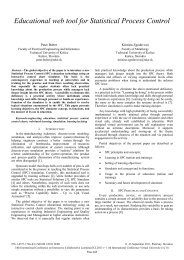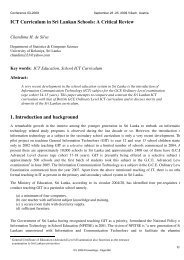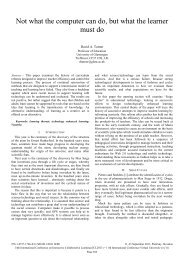Microcontrollers in Physics education: a circuit simulation ... - ICL
Microcontrollers in Physics education: a circuit simulation ... - ICL
Microcontrollers in Physics education: a circuit simulation ... - ICL
You also want an ePaper? Increase the reach of your titles
YUMPU automatically turns print PDFs into web optimized ePapers that Google loves.
Conference <strong>ICL</strong>2010<br />
September 15 -17, 2010 Hasselt, Belgium<br />
90<br />
80<br />
70<br />
60<br />
50<br />
40<br />
30<br />
20<br />
10<br />
0<br />
11,1<br />
31,6<br />
50,0<br />
42,1<br />
0,0<br />
26,3<br />
22,2<br />
15,8<br />
11,1<br />
5,3<br />
27,8<br />
10,5<br />
5,6<br />
1 2 3 4 5 6 7<br />
Picture 6.<br />
red circles: the pre-test , blue triangles post test<br />
0,0<br />
The idea of the movement of electrons is a difficult one for the young students. The electrons<br />
move follow<strong>in</strong>g the direction from the negative pole of the battery to the positive one. While<br />
<strong>in</strong>side the battery, electrons keep mov<strong>in</strong>g from the positive to the negative pole, so as to<br />
complete the <strong>circuit</strong>. To make th<strong>in</strong>gs worse, the so-called “conventional flow” of current is<br />
the opposite one from the electron-flow. The new device represents the electron-flow <strong>in</strong> the<br />
<strong>circuit</strong>, though children had no visual representation of what is happen<strong>in</strong>g <strong>in</strong>side the battery.<br />
S<strong>in</strong>ce the participants of the <strong>education</strong>al trial were 9-10 years old, no reference to the<br />
conventional flow of current was made <strong>in</strong> order to avoid a major misconception.<br />
In the post-test the students’ answers are divided between (a) 31.6% (±27.3%) (b) 42.1%<br />
(±27.6%) and (c) 26.3% (±27.1%). Tak<strong>in</strong>g <strong>in</strong>to account that the <strong>education</strong>al trial lasted 2<br />
hours, the results are encourag<strong>in</strong>g, most children understood that electric current flows<br />
follow<strong>in</strong>g a circle, <strong>in</strong> the whole <strong>circuit</strong>, but it is not as good as we would have liked.<br />
4.4. Question 3: Which of the follow<strong>in</strong>g pictures (referr<strong>in</strong>g to the amount of<br />
electric current <strong>in</strong> the wire) do you consider as correct?<br />
same<br />
same<br />
less<br />
more<br />
1)<br />
2)<br />
<strong>ICL</strong> 2010 Proceed<strong>in</strong>gs – Page 418<br />
9(12)



